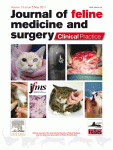
Practical relevance
Lower respiratory tract infections (LRTIs) in cats can be due to bacteria, parasites, fungi and viruses. This review details the practical investigation of these infections and highlights specific therapy where possible. The aim is to avoid the all-too-frequent temptation in practice to treat cats with lower respiratory tract signs empirically for feline bronchial disease (FBD)/asthma. This is potentially hazardous as immunosuppressive therapy for FBD/asthma could exacerbate disease due to a LRTI. Empirical treatment of suspected LRTI is also difficult to recommend given the wide range of potential pathogens.
Clinical challenges
Making a clinical ante-mortem diagnosis of LRTI in a cat can be challenging. Consistent historical, clinical, haematological and radiographic abnormalities are often lacking and findings may be non-specific. Astute clinical acumen, thorough investigation and high quality laboratory analysis are usually required for a diagnosis. Bronchoalveolar lavage, if feasible, and tests for lungworm should be routine in cats with lower respiratory tract signs. Lung fine needle aspiration may be useful in cases of diffuse or nodular pulmonary disease. Histopathology is rarely employed in ante-mortem investigations.
Evidence base
The authors have reviewed a substantial body of literature to provide information on many of the reported bacterial, parasitic, fungal and viral pathogens, including some that occur in Asia. Attention has been given to specific therapy for each pathogen, with evidence-based comments when there is a deviation from routine recommendations.